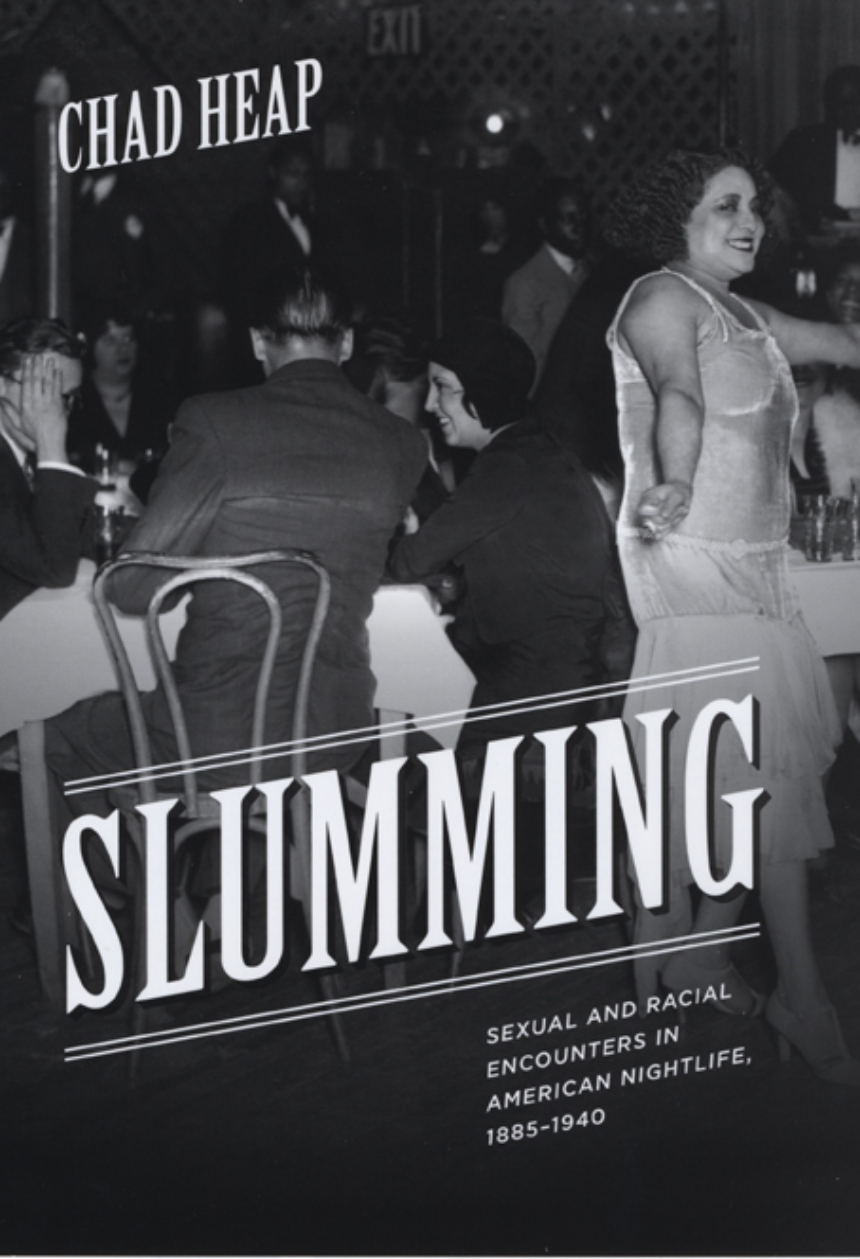Slumming
Sexual and Racial Encounters in American Nightlife, 1885-1940
During Prohibition, “Harlem was the ‘in’ place to go for music and booze,” recalled the African American chanteuse Bricktop. “Every night the limousines pulled up to the corner,” and out spilled affluent whites, looking for a good time, great jazz, and the unmatchable thrill of doing something disreputable.
That is the indelible public image of slumming, but as Chad Heap reveals in this fascinating history, the reality is that slumming was far more widespread—and important—than such nostalgia-tinged recollections would lead us to believe. From its appearance as a “fashionable dissipation” centered on the immigrant and working-class districts of 1880s New York through its spread to Chicago and into the 1930s nightspots frequented by lesbians and gay men, Slumming charts the development of this popular pastime, demonstrating how its moralizing origins were soon outstripped by the artistic, racial, and sexual adventuring that typified Jazz-Age America. Vividly recreating the allure of storied neighborhoods such as Greenwich Village and Bronzeville, with their bohemian tearooms, rent parties, and “black and tan” cabarets, Heap plumbs the complicated mix of curiosity and desire that drew respectable white urbanites to venture into previously off-limits locales. And while he doesn’t ignore the role of exploitation and voyeurism in slumming—or the resistance it often provoked—he argues that the relatively uninhibited mingling it promoted across bounds of race and class helped to dramatically recast the racial and sexual landscape of burgeoning U.S. cities.
Packed with stories of late-night dance, drink, and sexual exploration—and shot through with a deep understanding of cities and the habits of urban life—Slumming revives an era that is long gone, but whose effects are still felt powerfully today.
Read the introduction.
432 pages | 19 halftones, 7 maps | 6 x 9 | © 2009
Historical Studies of Urban America
History: American History, Urban History
Sociology: Race, Ethnic, and Minority Relations, Urban and Rural Sociology
Reviews
Table of Contents
List of Illustrations
Acknowledgments
Introduction
Part I
The Spatial Dynamics of Slumming and the Emergence of Commercial Leisure
Chapter 1
Into the Slums
The Spatial Organization, Cultural Geography and Regulation of a New Urban Pastime
Chapter 2
Beyond the Slums
Commercial Leisure and the Reorganization and Policing of Urban Space
Part II
The Changing Conceptualization of Sexuality and Race in the Slumming Vogues of Chicago and New York
Chapter 3
Adventures in the Slums and Red-Light Districts
Chapter 4
The Search for Bohemian “Thrillage”
Chapter 5
The Negro Vogue
Excursions into a “Mysterious Dark World”
Chapter 6
The Pansy and Lesbian Craze in White and Black
Epilogue
List of Abbreviations
Notes
Acknowledgments
Introduction
Part I
The Spatial Dynamics of Slumming and the Emergence of Commercial Leisure
Chapter 1
Into the Slums
The Spatial Organization, Cultural Geography and Regulation of a New Urban Pastime
Chapter 2
Beyond the Slums
Commercial Leisure and the Reorganization and Policing of Urban Space
Part II
The Changing Conceptualization of Sexuality and Race in the Slumming Vogues of Chicago and New York
Chapter 3
Adventures in the Slums and Red-Light Districts
Chapter 4
The Search for Bohemian “Thrillage”
Chapter 5
The Negro Vogue
Excursions into a “Mysterious Dark World”
Chapter 6
The Pansy and Lesbian Craze in White and Black
Epilogue
List of Abbreviations
Notes
Awards
The Publishing Triangle: Publishing Triangle: Shilts/Grahn Award for Gay/Lesbian Nonfiction
Finalist
